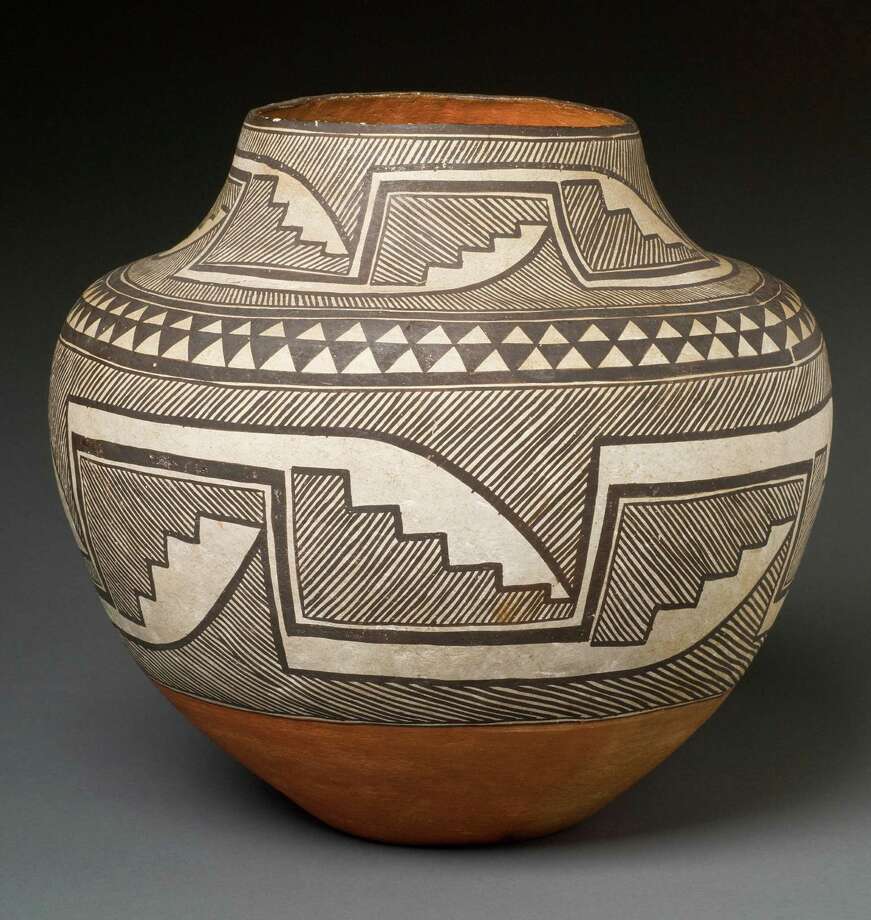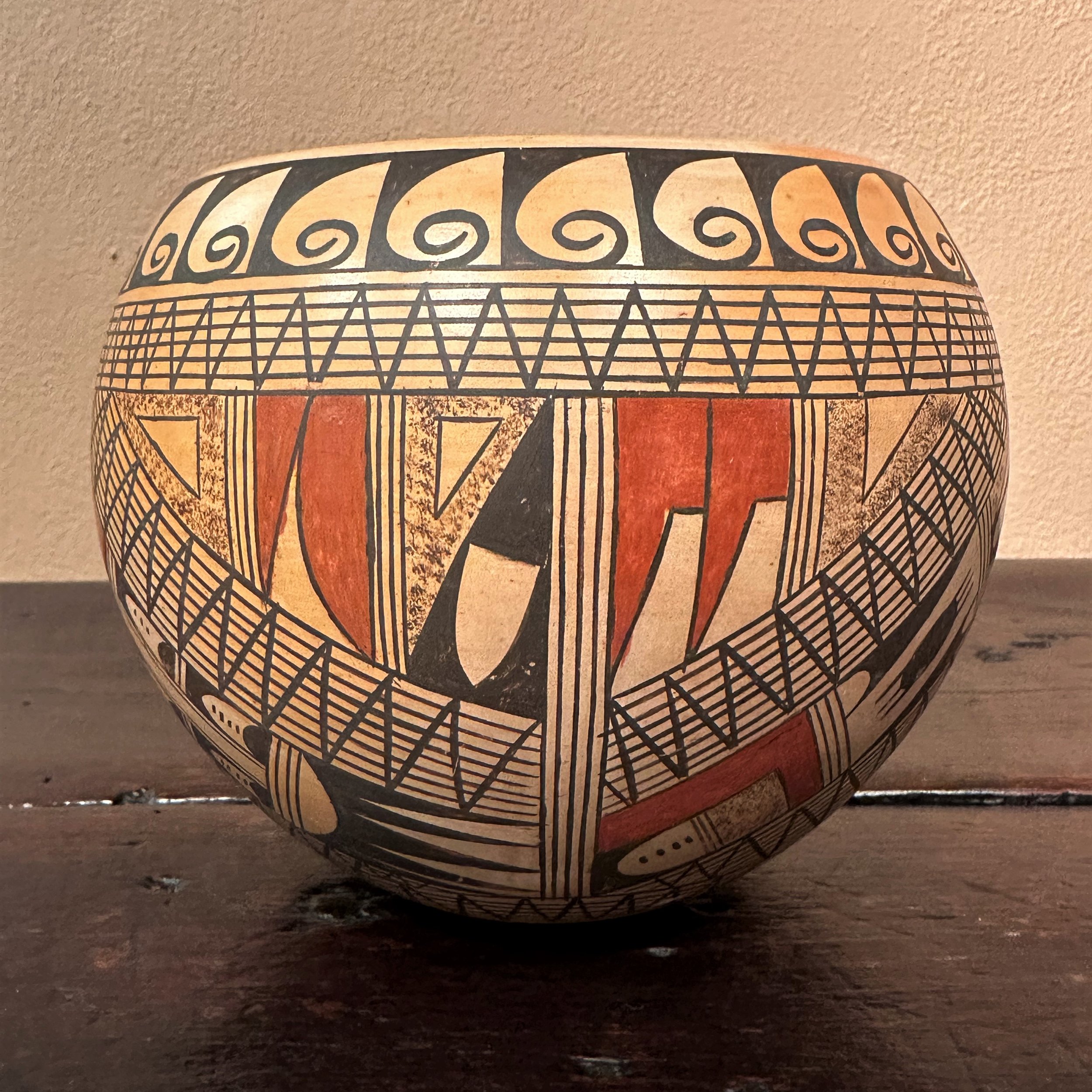
Echoes of Earth and Spirit: The Enduring Legacy of Native American Pottery
The unassuming lump of clay, pulled from the earth, holds within it an ancient narrative. For thousands of years, across the vast and varied landscapes of North America, indigenous peoples have transformed this fundamental material into objects of profound utility, striking beauty, and deep spiritual resonance. Native American pottery is far more than mere craft; it is a living chronicle, a testament to ingenious ancient techniques, a canvas for intricate regional designs, and a vibrant continuum of cultural identity that echoes from prehistory into the present day.
To truly appreciate Native American pottery is to understand its intimate connection to the land and the hands that shaped it. Before the potter’s wheel, before industrial kilns, Native artisans developed sophisticated hand-building methods that remain largely unchanged for millennia. The journey began with the meticulous sourcing of clay itself. Potters, often women, would "hunt" for specific clay deposits, discerning differences in plasticity, purity, and color. This was not a random act but a knowledge passed down through generations, an understanding of the earth’s nuances. Once harvested, the raw clay would undergo a labor-intensive process of cleaning, grinding, and tempering – mixing it with materials like sand, crushed shell, mica, or volcanic ash. This tempering was crucial, preventing the clay from shrinking too much and cracking during drying and firing, a testament to an early understanding of material science.
The primary forming technique was, and often still is, coiling. Potters would roll out long, snake-like coils of clay, building up the vessel wall spirally, smoothing and blending each coil into the last with tools made from gourds, river stones, or pieces of wood. This rhythmic, almost meditative process allows for a wide range of shapes, from elegant water jars (ollas) and cooking pots to ceremonial bowls and effigy figures. Pinching and slab construction were also employed for smaller vessels or specific forms. Each piece was then allowed to dry slowly, often for days or weeks, away from direct sunlight, a critical stage where any rush could result in irreparable damage.
Decoration was applied before firing. Slips – thin coats of liquid clay often of a different color – might be applied to create a smooth, even surface. Paints, derived from natural pigments like mineral oxides (iron for reds and browns, manganese for black) and organic materials (such as the boiled juice of beeplant or guaco for rich blacks), were applied with brushes made from yucca fibers, chewed sticks, or even human hair. The designs themselves are encyclopedias of cultural meaning: geometric patterns representing rain, mountains, or lightning; zoomorphic figures depicting animals with spiritual significance; anthropomorphic forms embodying ancestors or deities; or abstract motifs imbued with layers of symbolism unique to each tribe.
The final, most transformative step was firing. Traditional firing was typically an open-air pit firing, a communal event where pots were carefully arranged on a bed of fuel – wood, bark, dried animal dung – then covered and slowly brought to temperature. The control over heat and atmosphere was remarkable, achieved through careful placement of fuel and observation of smoke and flame. Oxidation firing, where ample oxygen is present, results in lighter, often reddish-brown hues. Reduction firing, achieved by smothering the fire and limiting oxygen, creates the distinctive deep blackware, as carbon penetrates the clay. This delicate balance of heat, fuel, and air transforms the fragile, dry clay into durable, beautiful ceramic, a moment of alchemical magic that has sustained cultures for millennia. As the renowned Pueblo potter Maria Martinez of San Ildefonso Pueblo, famous for her black-on-black pottery, once remarked, "I do not know how to explain how I do it. It is just in me." This intrinsic knowledge, passed through generations, speaks to the deep connection between potter and material.

The true richness of Native American pottery lies in its astonishing regional diversity, a direct reflection of varying environments, cultural practices, and aesthetic sensibilities. While pottery traditions existed across the continent, the American Southwest stands out as a veritable heartland of ceramic innovation and artistry.
The Southwest: A Tapestry of Clay
Here, ancient traditions stretch back to the Basketmaker and Ancestral Puebloan (Anasazi) peoples, whose intricate black-on-white designs on utilitarian and ceremonial vessels from sites like Chaco Canyon and Mesa Verde are archaeological treasures. The Mimbres culture, flourishing between 1000 and 1130 CE in what is now New Mexico, produced some of the most distinctive and enigmatic pottery. Their black-on-white bowls often featured detailed narrative scenes depicting humans, animals, and mythical creatures, sometimes with a "kill hole" pierced in the center, suggesting a ceremonial purpose, perhaps for releasing the spirit of the bowl when placed over a burial.
Contemporary Pueblo pottery is a vibrant continuation of these ancient lineages, with each pueblo maintaining its unique stylistic identity:
- Acoma Pueblo: Known for its exceptionally thin-walled, lightweight pottery, often painted with striking geometric patterns in black and white, or more recently, polychrome designs featuring birds and flowers. The clay is often a fine white, producing a brilliant base for their intricate designs.
- Hopi Pueblo: Characterized by warm, earthy tones – yellows, oranges, and reds derived from local slips – adorned with black and dark brown designs. The "Sikyatki Revival" style, initiated by Nampeyo of Hano in the late 19th century, brought back ancient designs found on archaeological fragments, blending geometric patterns with bird and feather motifs.
- Zuni Pueblo: Distinctive for its deep red slip base, often adorned with black and white designs. Iconic Zuni motifs include the "deer with a heartline" (a line from the mouth to the heart, representing breath and life), or spiral volutes symbolizing water and fertility.
- San Ildefonso and Santa Clara Pueblos: Famous worldwide for their polished blackware, a tradition revitalized and perfected by Maria and Julian Martinez. Their black-on-black pottery, achieved through precise reduction firing and painstaking stone polishing, features matte designs etched into the lustrous black surface. Santa Clara also produces deep redware and carved or incised designs.

Beyond the Pueblos, other Southwestern groups also have pottery traditions. The Navajo, while more renowned for their weaving, also produce utilitarian pottery, often unpainted and sometimes coated with pine pitch for waterproofing.
Other Regional Expressions:
While the Southwest dominates the narrative of Native American pottery, other regions developed their own unique traditions:
- Southeastern Woodlands: Cultures like the Mississippian peoples created elaborate effigy pots, often in the forms of human heads, animals, or mythical beings, used in ceremonial contexts. Their pottery could be highly polished and sometimes adorned with shell-tempered clay.
- Eastern Woodlands: The Iroquois and other Woodland groups produced distinctive globular pots with pointed bases, often decorated with incised geometric patterns around the rim. Early examples were cord-marked, leaving impressions of twisted cords on the surface.
- Great Plains: Due to the nomadic lifestyle of many Plains tribes, pottery was less prevalent than in sedentary agricultural communities, with baskets and rawhide containers often serving similar functions. However, some groups, particularly those on the fringes or with more settled periods, did create functional pottery.
Cultural Resonance and Spiritual Threads
For Native American peoples, pottery is rarely just an object. It is often seen as a living entity, imbued with the spirit of the earth and the potter. The clay itself is Mother Earth, and the transformation through water, air (drying), and fire is a sacred act of creation. The "spirit line" or "break" found on some pots, a small line interrupting a design or the rim, is believed by some to allow the pot’s spirit to escape, or to allow the potter’s spirit to depart from the finished piece, preventing her from being "trapped" within her creation.
Pottery has served a multitude of roles: cooking, food storage, water carrying, ceremonial use, and as trade goods. It is a medium for storytelling, for transmitting cultural knowledge, and for reinforcing communal identity. The passing down of pottery techniques, often from mother to daughter, is a powerful form of cultural preservation, connecting generations through a shared artistic language.
The Modern Crucible: Revitalization and Evolution
The 20th century presented significant challenges to Native American pottery traditions. Colonial policies, assimilation efforts, and the availability of mass-produced goods led to a decline in traditional pottery making in many areas. However, a powerful revitalization movement began in the late 19th and early 20th centuries, championed by artists like Maria Martinez, whose work not only brought international recognition to Pueblo pottery but also inspired countless others to reclaim and perpetuate their heritage.
Today, Native American pottery continues to evolve. While many artists remain deeply committed to ancient techniques and traditional designs, others are pushing boundaries, integrating contemporary forms, colors, and themes while still honoring their ancestral roots. Institutes and cultural centers play a vital role in teaching traditional methods to new generations, ensuring that this invaluable knowledge is not lost. The market for Native American pottery, both traditional and contemporary, has grown, providing economic opportunities but also raising questions about authenticity, cultural appropriation, and the balance between artistic expression and commercial demand.
The enduring legacy of Native American pottery is a testament to human ingenuity, artistic vision, and profound cultural resilience. Each pot, whether an ancient shard unearthed by archaeologists or a vibrant new creation from a contemporary artist, carries with it the breath of its maker, the essence of the earth, and the echoes of a history rich with spirit and story. It reminds us that art is not merely decoration but a fundamental expression of humanity’s connection to its world, a silent, powerful voice speaking across millennia.